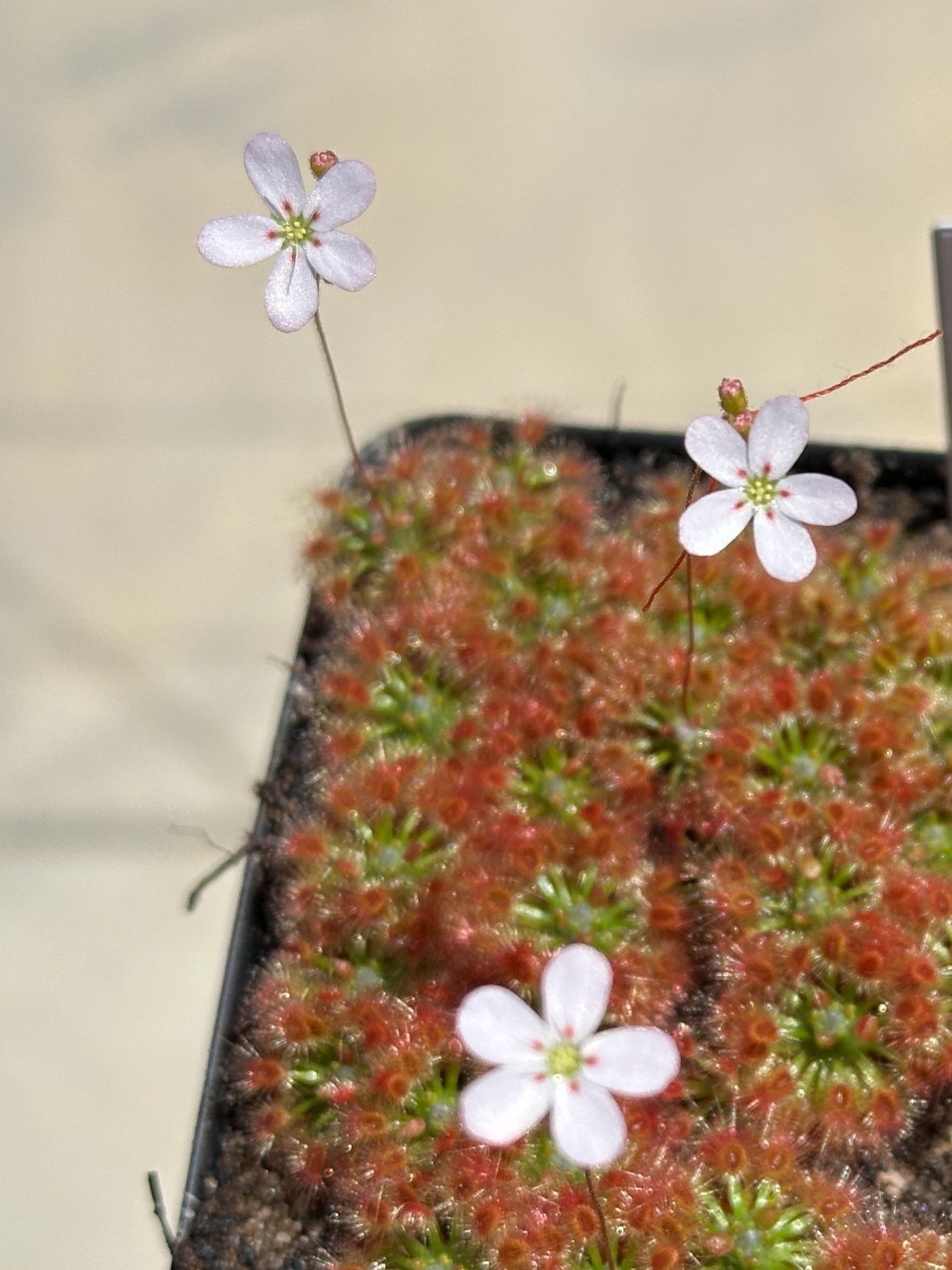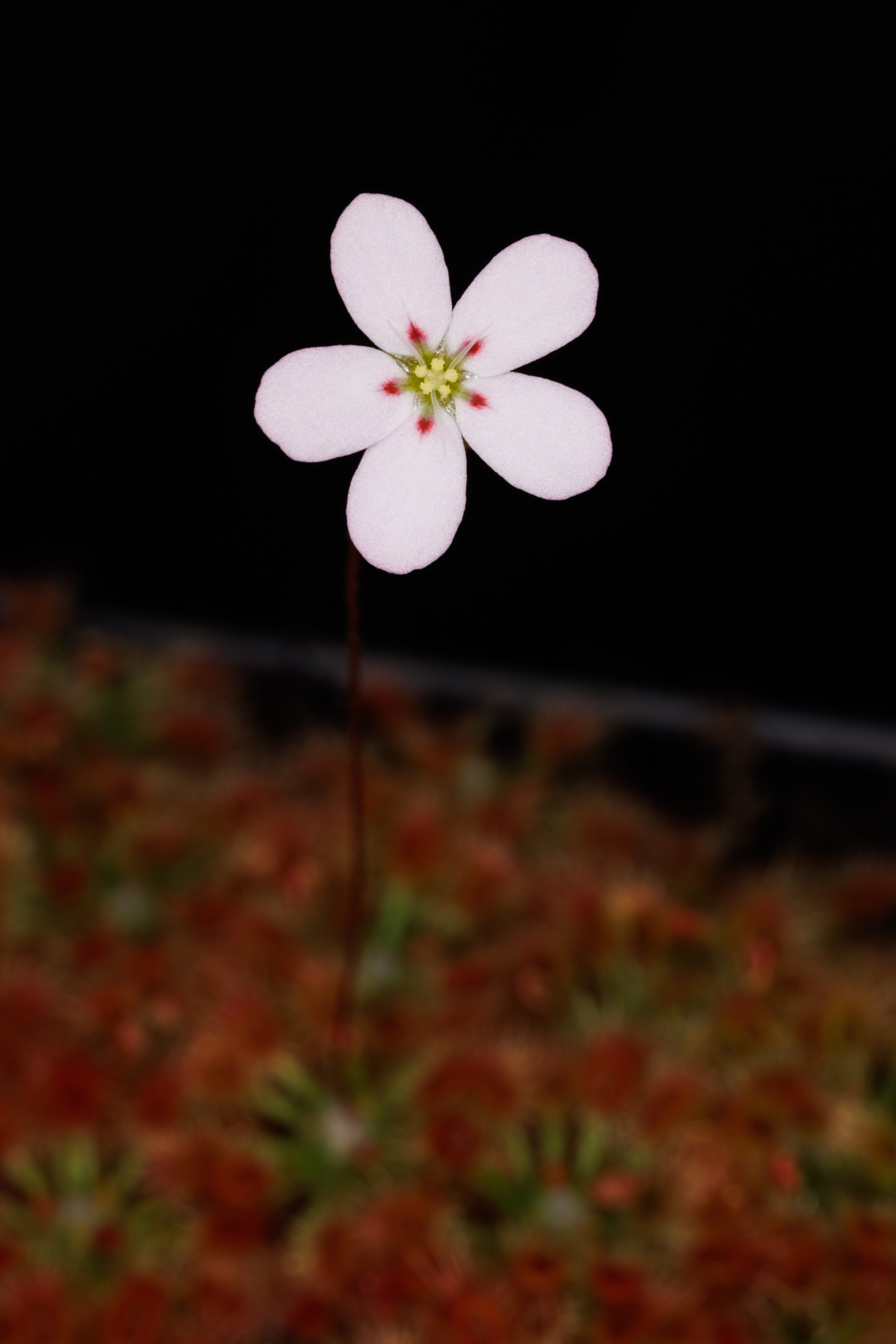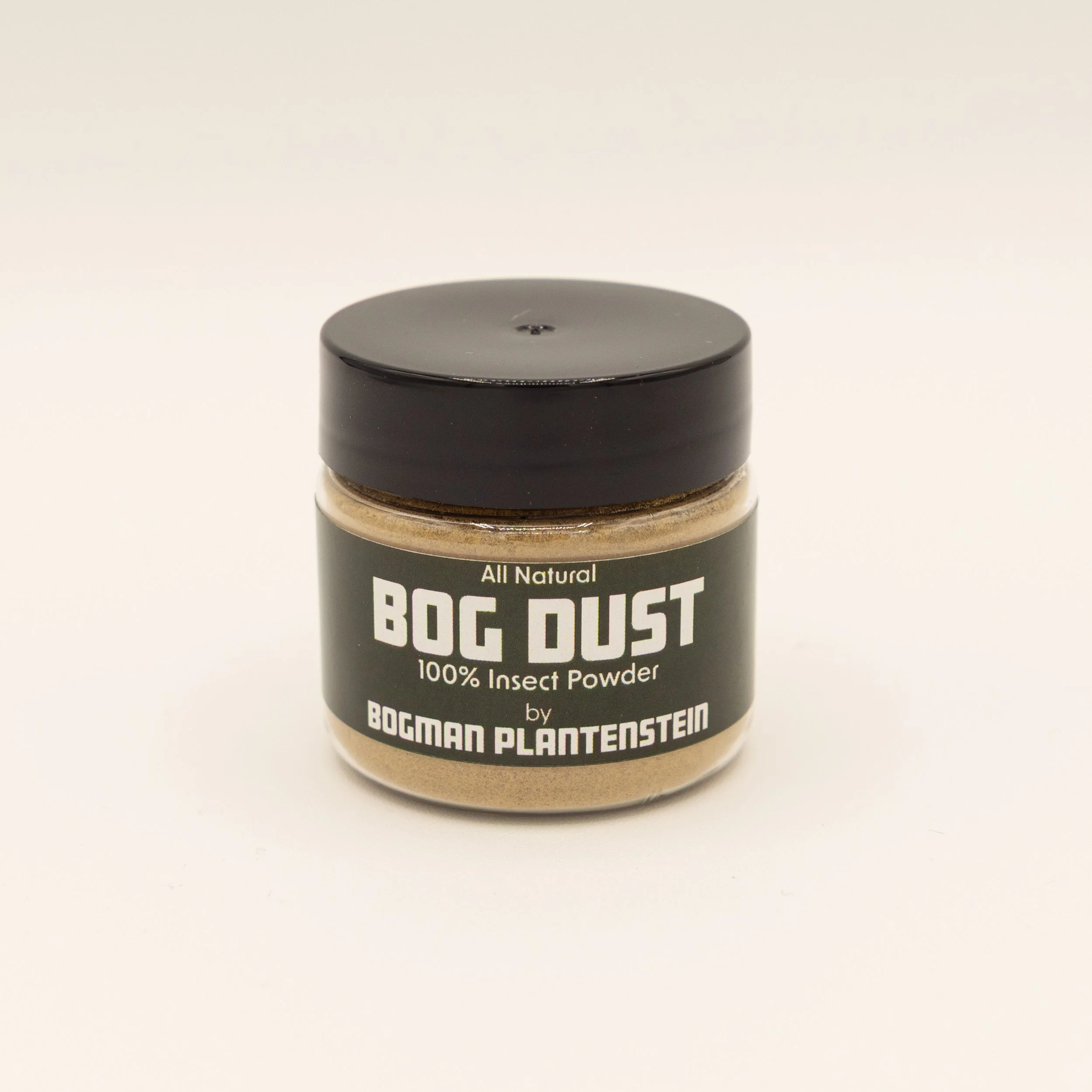 Image 1 of 7
Image 1 of 7

 Image 2 of 7
Image 2 of 7

 Image 3 of 7
Image 3 of 7

 Image 4 of 7
Image 4 of 7

 Image 5 of 7
Image 5 of 7

 Image 6 of 7
Image 6 of 7

 Image 7 of 7
Image 7 of 7








Drosera helodes "red"
Description
Drosera helodes “red” is a rosetted pygmy sundew with tall whitish flowers with a red spot on the petal. It can form dense colonies of plants with a combination of yellow, green and red in the leaves and tentacles. Overall, a very attractive plant with a distinct appearance and tall flowers stalks.
As a pygmy sundew, it will produce ‘gemmae’ which are tiny modified leaves that appear as geometric circles of buds in the center of the growing point each fall. Each gemma can detach from the main plant and rapidly grow into a new plant (much faster than planting seed).
Drosera helodes “red” produces small round gemmae. Adjust the photoperiod to be 9-10 hours in winter, gradually cycling to 14-15 hours in summer. They require proper lighting cues to produce gemmae and to flower in spring.
Plants will be potted in 2.5”W x 3.5”H pots with at least 4 plants per pot.
Growing Information
Climate: Mediterranean (SW Australia). 40-100F, low to moderate humidity.
Light: Full Sun or 20W per sq ft LED light. Pygmy sundews love bright light.
Water: Distilled or Reverse Osmosis water. Sitting in 0.5”-1” of water using tray method.
Soil: 40% Peat: 60% Perlite/Sand is a good mix. Pygmy Sundews like well draining soils. Rinse media with distilled or reverse osmosis water to remove excess salts.
Feeding: Feed leaves with Insect Powder every 2-4 weeks.
Description
Drosera helodes “red” is a rosetted pygmy sundew with tall whitish flowers with a red spot on the petal. It can form dense colonies of plants with a combination of yellow, green and red in the leaves and tentacles. Overall, a very attractive plant with a distinct appearance and tall flowers stalks.
As a pygmy sundew, it will produce ‘gemmae’ which are tiny modified leaves that appear as geometric circles of buds in the center of the growing point each fall. Each gemma can detach from the main plant and rapidly grow into a new plant (much faster than planting seed).
Drosera helodes “red” produces small round gemmae. Adjust the photoperiod to be 9-10 hours in winter, gradually cycling to 14-15 hours in summer. They require proper lighting cues to produce gemmae and to flower in spring.
Plants will be potted in 2.5”W x 3.5”H pots with at least 4 plants per pot.
Growing Information
Climate: Mediterranean (SW Australia). 40-100F, low to moderate humidity.
Light: Full Sun or 20W per sq ft LED light. Pygmy sundews love bright light.
Water: Distilled or Reverse Osmosis water. Sitting in 0.5”-1” of water using tray method.
Soil: 40% Peat: 60% Perlite/Sand is a good mix. Pygmy Sundews like well draining soils. Rinse media with distilled or reverse osmosis water to remove excess salts.
Feeding: Feed leaves with Insect Powder every 2-4 weeks.


